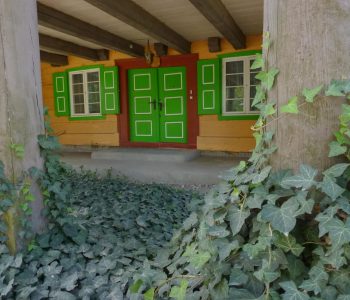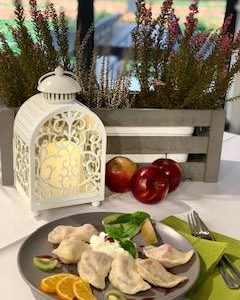According to historical sources, snuff was brought to Pomerania in the 18th century, through trade with Western Europe, as well as via nobility and clergy, among whom using snuff was fashionable. Kashubian people loved the new plant, even though snuff is pretty much tobacco. This fact hadn’t discouraged them from “snuffing”. According to Kashubian beliefs, it’s healthier than smoking tobacco, because “a man doesn’t have a chimney in his head to let out smoke”, whereas the nose is accustomed to snuffing.
“The diabolic herb” (“Diabelszcze ziele” in Kashubian) is nothing more but powdered tobacco leaves, with mysterious additional ingredients, all mixed in proper proportions. First, it was believed that snuff had medicinal purposes, which further encouraged people to use it. When the custom spread, and frequency of snuffing surpassed medicinal qualities, it became clear that snuff can be addictive and bad to health
The secret lies in proper selection of ingredients. We have to remember that “home-made” snuff, prepared according to traditional, family recipe will have better flavour and overall quality than mass produced one. Compositions of these “home-made” mixes are kept secret by their owners. Often, even family members don’t know the recipe. Among unique elements that comprise Kashubian snuff are such ingredients as: young cherry leaves, dried plums, juniper berries, broad bean and bean pods, as well as coffee, amber, and herbs: mint, camomile, and laurel.
Snuff can be produced using only simple pots, crafted by local potters, grinding stick (“tabacznik” , used to grind leaves), and small sieves. Juniper wood was considered the best material for creating a grinding stick. It ground so well that snuff wouldn’t stick to it. The final element required to grind tobacco, was a sieve. Made from horse hair on a wooden frame, it was used to sift the product several times in order to use only the most finely grounded plants for further processing. Grounded leaves gained compact texture by being soaked in special liqueur for 24 to 48 hours. After that time it gained marvellous aroma. The custom of snuffing tobacco was so common that even a priest before preaching used to snuff some and treated church goers with some.
How was snuff stored? Large quantities weren’t stored in large containers as it was said to diminish snuff’s powers, so people began using smaller containers to snuff tobacco directly from them. Snuff is a valuable gift, “normal” containers weren’t enough to store tobacco. This got horn carvers working, who created curved horns, valued by all Kashubian people.
Great skills and precision on the side of the craftsman were necessary to create tobacco boxes, but also an idea for a shape. The usual crafting material was small cow horns, several centimetres in length. They usually underwent processing for several hours, being softened with water and flattened in a vice, where the target shape was given. After the shape had settled, ornaments were carved out. The most amazing horns took shapes of tulips, bird heads, or even a pig’s mouth on its top. This is also where snuff came out of the horn, straight to a snuffer’s nose.
The most beautiful horn snuffboxes are usually used by Kashubians on special occasions. On a daily basis, they carry with them less splendid ones, but “the diabolic herb” goes everywhere a Kashubian would go.














